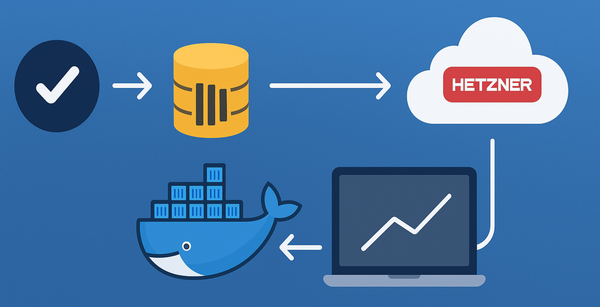Haskell Yesod Web Application in Docker
Yesod is one of the web frameworks available for Haskell. It seems to be the easiest one out of the multiple choices available to get started with.
Prerequisites
- Docker
- Haskell Stack version 2.3.1
You can find all yesod stack templates available from the github repository. At the time of writing, the available stack yesod templates are:
- yesodweb/minimal
- yesodweb/mongo
- yesodweb/mysql
- yesodweb/postgres
- yesodweb/simple
- yesodweb/sqlite
We will use the minimal yesod template:
stack new my-project yesodweb/minimal
It scaffolds the following files…
.
| ____.dir-locals.el
| ____ stack.yaml
| ____ app
| | ____ Main.hs
| ____ my-project.cabal
| ____ README.md
| ____.gitignore
| ____ package.yaml
| ____ routes
| ____ src
| | ____ Application.hs
| | ____ Home.hs
| | ____ Add.hs
| | ____ Foundation.hs
Dockerfile
This Dockerfile was greatly influenced by the blog post Optimized Docker builds for Haskell Stack by Tim Spence. Create a Dockerfile at the root of the director with the following content:
FROM fpco/stack-build:lts-16.0 as dependencies
RUN mkdir /opt/build
WORKDIR /opt/build
# GHC dynamically links its compilation targets to lib gmp
RUN apt-get update \
&& apt-get download libgmp10
RUN mv libgmp*.deb libgmp.deb
# Docker build should not use cached layer if any of these is modified
COPY stack.yaml package.yaml stack.yaml.lock /opt/build/
RUN stack build --system-ghc --dependencies-only
# ------------------------------------------------------------------------
FROM fpco/stack-build:lts-16.0 as build
# Copy compiled dependencies from previous stage
COPY --from=dependencies /root/.stack /root/.stack
COPY . /opt/build/
WORKDIR /opt/build
RUN stack build --system-ghc
RUN mv "$(stack path --local-install-root --system-ghc)/bin" /opt/build/bin
# -----------------------------------------------------------------------
# Base image for stack build so compiled artifact from previous
# stage should run
FROM ubuntu:18.04 as app
RUN mkdir -p /opt/app
WORKDIR /opt/app
# Install lib gmp
COPY --from=dependencies /opt/build/libgmp.deb /tmp
RUN dpkg -i /tmp/libgmp.deb && rm /tmp/libgmp.deb
COPY --from=build /opt/build/bin .
COPY --from=build /opt/build/static ./static
COPY --from=build /opt/build/config ./config
ENV YESOD_PORT 8080
EXPOSE 8080
CMD ["/opt/app/my-project"]The blog post from Tim Spence also mentions to replace the base images with haskell docker image. However, I was encountered with many issues when I tried that. Package conflicts for language-javascript version was one of them. After digging into the reason behind it, I figured out that I needed to use Stackage package registry instead of Hackage.
Most Haskell dependencies you use live on the Hackage repository. But Stack adds a further layer with Stackage. A resolver set in Stackage contains many of the most common Haskell libraries out there. But there’s only a single version of each. Stack maintainers have curated all the resolver sets. They’ve exhaustively checked that there are no dependency conflicts between the package versions in the set.
The readme at haskell docker image also advises against using stack tool inside the Dockerfile.
Do not use stack commands inside the dockerfile. Instead use cabal to install and build the image.
Cabal is a system for building and packaging Haskell libraries and programs. It defines a common interface for package authors and distributors to easily build their applications in a portable way. Cabal is part of a larger infrastructure for distributing, organizing, and cataloging Haskell libraries and programs
Another problem I faced when trying to use Cabal inside the Dockerfile was that Cabal kept complaining that it can’t find the modules specified inside the *.cabal file’s exposed-modules.
Summary
I found it very hard to find enough blog articles or up to date documentation available that shows how to setup a docker image for Yesod or Haskell. Even though I’ve managed to configure a working Dockerfile, the whole step for build the docker image takes very long to build. Hopefully, I will find other alternatives or optimizations in the future. If I do, I will update this blog with the details.


